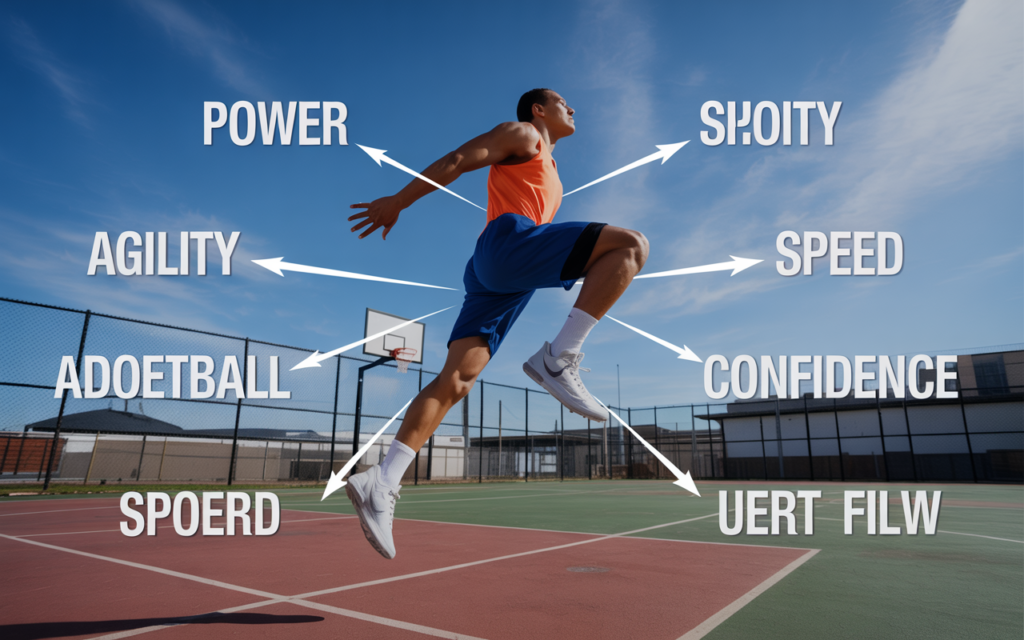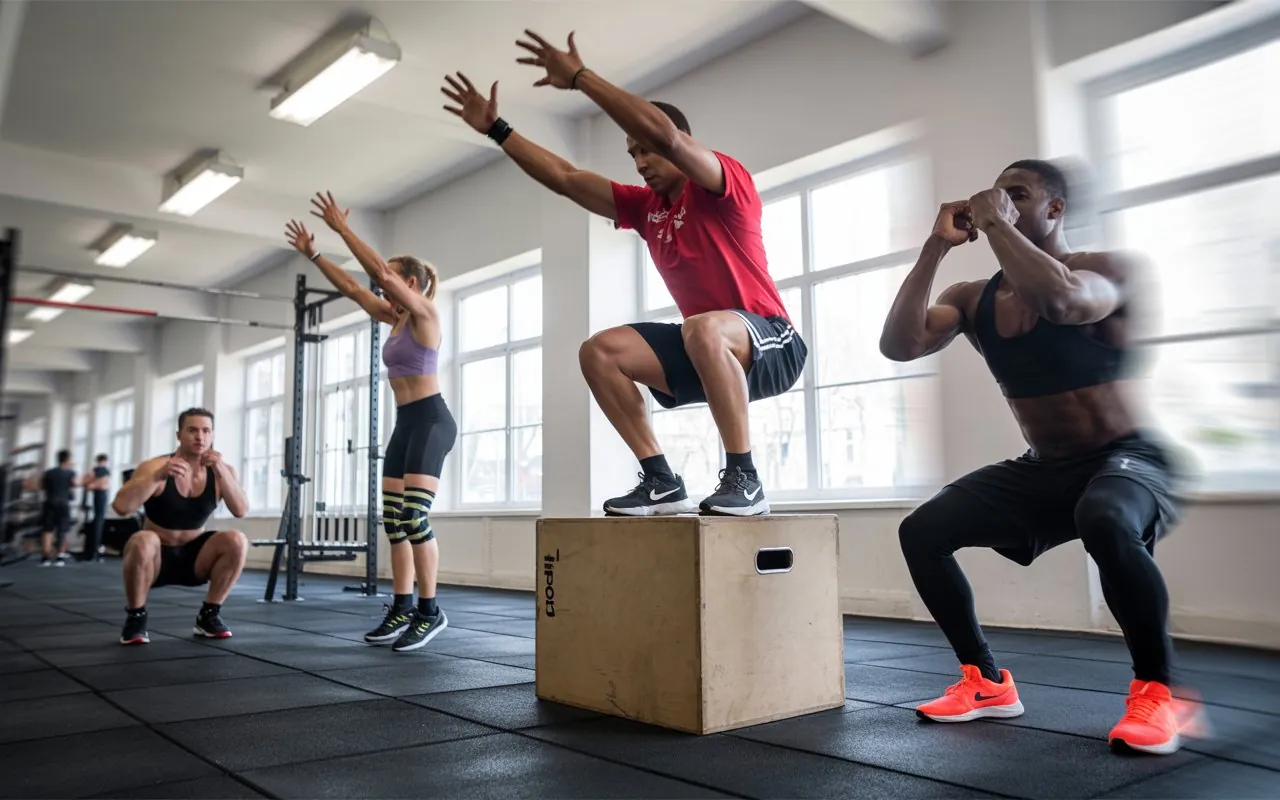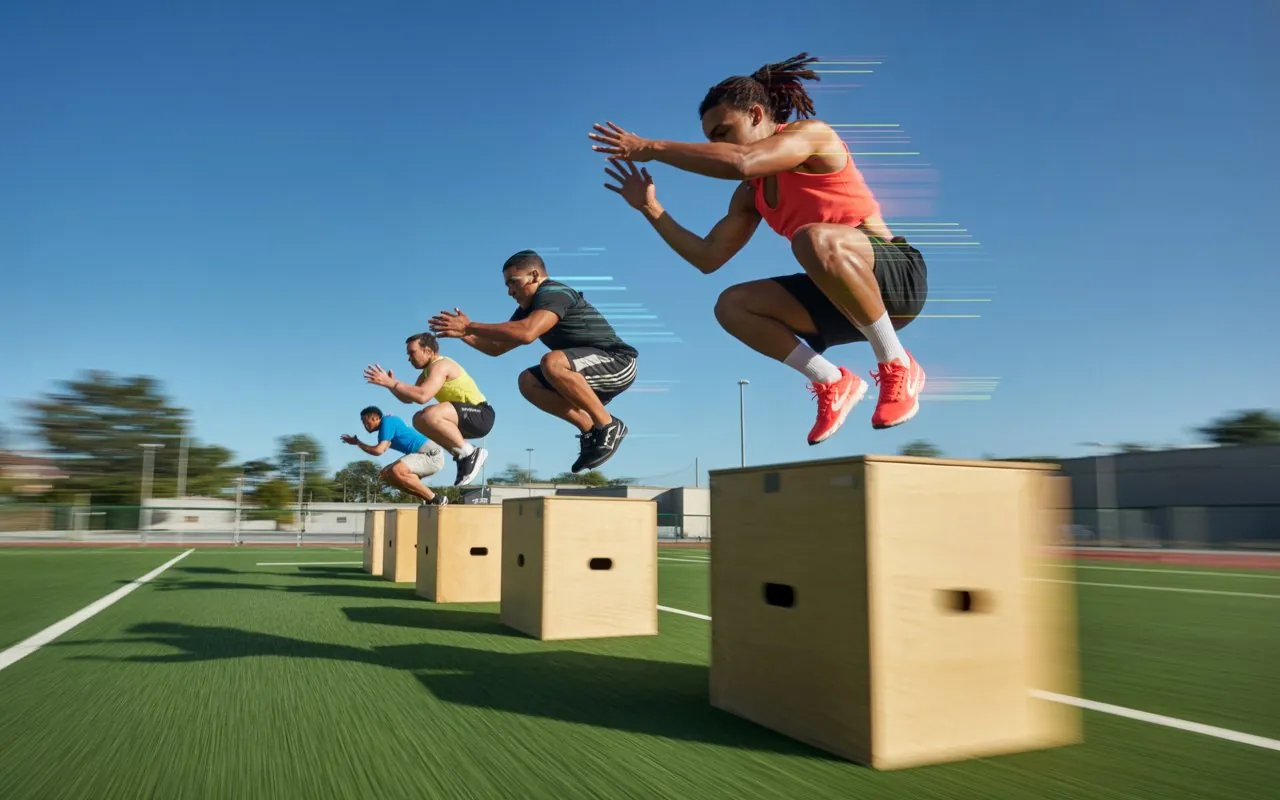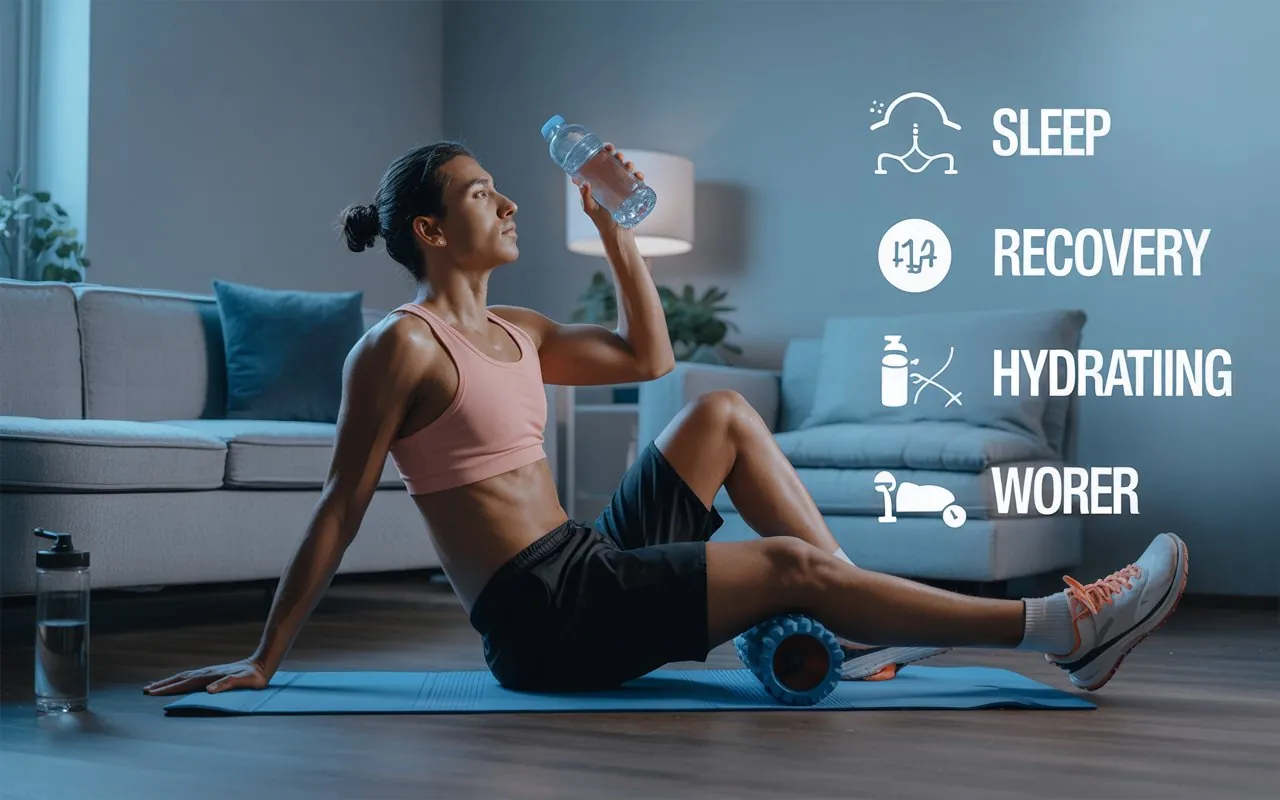Maximizing your vertical leap isn’t just for elite basketball players or Olympic volleyball athletes—it’s an essential skill that benefits anyone looking to improve athleticism, functional strength, and explosive power. Whether your goal is to soar for a dunk, elevate for a winning spike, or simply build a more dynamic, responsive body, understanding the science and actionable steps behind the best exercises for increasing vertical jump can make all the difference. In competitive sports, having a higher vertical leap creates opportunities to outperform opponents, turn heads with your agility, and reach new milestones in your fitness journey.
Globally, athletes, fitness enthusiasts, and coaches are searching for proven, effective methods to improve vertical jump height. The unique aspect of vertical jump training is that it challenges your full body: glutes, hamstrings, thighs, calves, and core all work in harmony to propel you off the ground. This type of training rewires your nervous system for speed and power, engages your muscles in new and explosive ways, and fosters a mindset of continual improvement. With the right mix of foundational strength exercises, plyometric drills, and recovery strategies, you’ll not only lift higher but also build a stable, injury-resistant body.
If you’ve ever wondered why some athletes take off seemingly effortlessly while others struggle to get off the ground, the answer boils down to targeted, intentional training and knowledge. This comprehensive guide on the best exercises for increasing vertical jump draws on the latest research, expert recommendations, and practical routines that anyone—no matter their athletic background or goals—can implement. Whether you are in Lagos’s bustling gyms or working out at home, this guide is designed to help you unlock your natural potential, break through previous limits, and truly jump into a stronger, more athletic version of yourself.
Understanding the Vertical Jump
Vertical jump is a measure of how high you can elevate off the ground from a standstill, reflecting your body’s ability to generate rapid, coordinated force through the lower body. This skill is vital in sports like basketball, volleyball, football, and track and field, but valuable for any athlete striving for peak explosiveness.
Types of Vertical Jump
- Standing Vertical Jump (No Step): Pure force production from a static start.
- Approach Vertical Jump (With Step/Run-Up): Incorporates horizontal momentum—common in sports.
- Single-Leg vs. Double-Leg Vertical: Jumps taken off one or both legs challenge stability, strength, and coordination differently.
Why Vertical Jump Matters
- Performance: Higher jumps = more rebounds, dunks, blocks, and spikes.
- Agility & Quickness: A strong vertical correlates with faster sprints and rapid direction changes.
- Confidence: Dominating above the rim or net is a mental edge in any sport.
Benefits of a Higher Vertical Jump

- Total-Body Power: Jump training develops hip, core, hamstring, and calf strength.
- Explosive Speed: Shorter 10m and 40m sprint times.
- Injury Resilience: Stronger muscles and connective tissues lower risk.
- Transfer to Daily Life: Better bone health, balance, and overall mobility.
- Enhanced Athleticism: Skills developed in jump training, like coordination and proprioception, improve all sports performance.
Tip: Even non-athletes reap benefits—the same neurological and muscular adaptations boost overall fitness.
Key Muscles and Physiology

Understanding the prime movers and stabilizers involved offers deeper insight into vertical jump enhancement.
Major Contributors:
- Gluteus Maximus/Minimus: Hip extension, crucial for explosive power.
- Quadriceps: Knee extension, driving you off the ground.
- Hamstrings: Hip extension and knee flexion power.
- Gastrocnemius & Soleus (Calves): Ankle extension for added lift.
- Core (Abs, Obliques, Spinal Erectors): Transmits and stabilizes power throughout the movement.
Secondary: Hip flexors, adductors, and even upper body (arms swing aids momentum).
Neuromuscular Factors
- Rate of Force Development (RFD): Speed at which muscle force is generated.
- Stretch-Shortening Cycle (SSC): Reflexive muscular action that enhances explosive output during polymetric movements.
- Motor Unit Recruitment: Training teaches the nervous system to fire more muscle fibers, faster.
Bottom Line: No single muscle creates a great jump; it’s coordinated, explosive, synchronized action.
Assessing and Tracking Your Vertical
How to Measure Your Baseline
- Standnext to a wall and extend your arm overhead, making a small mark.
- Without a step, jump as high as you can, mark the peak.
- Measure the difference: That’s your “standing vertical.”
Or, use a Vertec device, jump mat, or even slow-motion phone video for accuracy.
Track Progress:
- Test every 3–4 weeks.
- Keep a log: Note jump type, surface, and how you felt.
Setting Goals
- Are you seeking one iconic dunk, or do you need repeated jumps across a match? Your approach may shift based on your sport.
- Beginners can aim for a 2–4 inch increase in 8–12 weeks with smart programming.
- Intermediate/advanced athletes chase smaller, but still meaningful, gains.
The Best Exercises for Increasing Vertical Jump

This section breaks down the best exercises for increasing vertical jump, divided into logical progressions.
A. Foundational Strength Moves
Strength builds the base for all explosive performance. You cannot maximize jump power without first developing raw lower-body strength.
1. Barbell Back Squats
What: King of leg exercises, targets quads, glutes, hamstrings, and core.
How:
- Set up a barbell on your back, feet shoulder-width apart.
- Lower hips back and down, keeping chest up, until thighs are parallel or lower.
- Explode up, driving through the floor.
Programming:
- 3–5 sets x 5–8 reps, 2–3x/week
- Focus on forceful, fast concentric (up) motion.
Pro Tip: Film your form. Proper squats track knees over toes, equal weight distribution, and maintain neutral spine.
2. Romanian Deadlift (RDL)
What: Hamstrings, glutes, lower back—key for hip extension.
How:
- Stand tall with weights in hand (barbell or dumbbells).
- Slight knee bend, hinge hips back, lowering weights while keeping back flat.
- Feel stretch at bottom, then snap hips forward to stand.
Tips: Progress load only with perfect form. Try single-leg RDLs to challenge core and balance further.
3. Bulgarian Split Squat
What: Unilateral power, hip and knee stability, and balance.
How:
- Rear foot elevated behind—lunge forward.
- Drop back knee straight down, drive up.
- Switch legs after each set.
Programming: 3–4 sets x 8–10 reps.
4. Walking Lunges
What: Quad and glute strength, gait coordination.
How:
- Step forward, lower until both knees at 90°.
- Push off front foot and repeat on alternate leg.
5. Hip Thrusts
Why: Directly targets glutes for powerful hip extension.
How:
- Shoulders supported on a bench, barbell across hips.
- Drive through heels to raise hips until thighs and torso are parallel.
B. Dynamic Plyometric Drills

Plyometrics teach the body to apply strength quickly and efficiently—this is the fast-twitch, explosive training that converts gym strength to game-day hops.
1. Box Jumps
- Start with a moderate box.
- Rapid squat and arm swing, explode onto the box, land softly.
- Focus on minimal ground contact time—quick takeoff.
Variations:
- Single-leg box jumps
- Seated box jumps (begin seated, jump up)
2. Depth Jumps
- Step off a box (12–24 inches).
- Land, immediately rebound as high as possible.
- Builds SSC utilization and reactive explosiveness.
3. Broad Jumps (Standing Long Jump)
- Powerful forward leap from a standstill.
- Swing arms, explode out. Land, absorb, reset.
- Improves hip and knee drive, as well as total-body power.
4. Tuck Jumps
- Jump explosively upward, tucking knees to chest.
- Repeat quickly for reps.
- Great for cardiovascular capacity and SSC potentiation.
5. Lateral Bounds
- Powerful side-to-side jumps, landing on single leg, mimicking athletic shifts.
- Builds lateral explosiveness and knee/ankle stability.
6. Power Skips
- Exaggerated skipping, focus on vertical height, arm drive.
- Can be done forward, backward, or in place.
C. Advanced Explosive Training
After mastering basics, move to these powerful jump enhancers.
1. Olympic Lift Variants (e.g., Hang Clean, Power Clean)
- Require technical coaching.
- Train triple extension (ankle, knee, hip) which directly transfers to high jumping.
- Few reps, high focus, intensifies neuromuscular adaptation.
2. Medicine Ball Throws
- Overhead slam, chest pass, backward throw.
- Builds full-body explosiveness, core power, and improves ground reaction force timing.
3. Resistance Band Jumps
- Attach bands from floor to waist.
- Overload the jump, forcing muscles to accelerate harder and decelerate under load.
4. Weighted Vertical Jumps
- Hold light dumbbells (~5 kg) or wear a weight vest.
- Perform standard jump mechanics for safe, low-volume sets.
- Increases rate of force development under load.
D. Sports-Specific and Reactive Drills
Athletes should integrate sport-mimicking drills once or twice per week for best transfer.
1. Approach Jumps (With Run-Up)
- Mimic basketball/volleyball attack jumps.
- Practicing takeoff, arm swing, and landing mechanics at game speed.
2. Rebounding and Tapping Drills
- Stand under a hoop, jump repeatedly to tap or grab a net/ball.
- Teaches repeated vertical output, recovery, and landing control.
3. Rim Touch and Dunk Attempts
- For basketballers: Progressing rim jumps, using both standing and running leaps.
- Video your approach to improve mechanics over time.
Sample Vertical Jump Training Program
Here’s a detailed weekly schedule leveraging these best exercises for increasing vertical jump. Adjust intensity based on experience.
| Day | Focus | Example Drills/Exercises |
|---|---|---|
| Monday | Strength + Plyometrics | Barbell Squat 4×6, RDL 3×8, Box Jumps 5×3, Tuck Jumps |
| Tuesday | Mobility + Core + Recovery | Dynamic stretch, Planks/Carries, Light skips |
| Wednesday | Explosive Power & Technical Skill | Hang Clean 5×3, Depth Jumps 4×4, Medicine Throws 4×8 |
| Thursday | Unilateral/Balance + Conditioning | Bulgarian Squats 3×10, Lateral Bounds 5×4, Sprints |
| Friday | Rest or Active Mobility | Yoga, Foam Roll, Hip Mobility Drills |
| Saturday | Sports-Specific Application | Approach Jumps 5×3, Rim Touch/Net Drills, Rebounds |
| Sunday | Full Rest | Sleep, hydration, review logs |
Progression Tips:
- Increase volume OR intensity gradually every 2–3 weeks.
- Deload (reduce volume/load) for 1 week every 6–8 weeks to recover and test jumps.
Essential Recovery Strategies

Jump training is tough on muscles, joints, and the nervous system. Equal effort should go into:
- Sleep: Aim for 7–9 hours/night. Growth hormone release peaks during deep sleep, critical for muscle repair.
- Active Recovery: Light movement (walking, swimming), mobility and flexibility routines prevent soreness.
- Tissue Prep: Use foam roll and stretches for quads, glutes, calves, hip flexors.
- Hydration: Well-hydrated tissues are less injury-prone and recover faster.
Monitoring Fatigue
- Sore more than three days? Reduce intensity.
- Heavy legs/tired jumps on warm-up? Emphasize recovery or take an extra rest day.
Nutrition, Supplements, and Sleep

Eating for Explosiveness
- Protein: 1.6–2.2g/kg/day for muscle growth/repair.
- Carbs: Support energy and recovery, particularly around training.
- Fats: Homemade meals with nuts, avocados, olive oil aid hormone production.
Pre-Workout Snacks:
Banana and nut butter, smoothie with greens and whey protein, oatmeal with berries.
Supplements
- Creatine: Proven to enhance power and recovery.
- Beta-Alanine: Delays fatigue in repeated sprint/jump activity.
- Vitamin D, Magnesium, and Omega-3s: For overall performance and muscle health.
Consult your physician before starting new supplements.
Sleep Strategies
- Wind down with dark room, cool temperature.
- Try apps for meditation or deep breathing to facilitate better sleep onset.
Common Mistakes and How to Fix Them
- Neglecting Strength: Prioritize squats/deadlifts before advanced plyos.
- Overusing Plyometrics: Quality > quantity. Too many jumps lead to exhaustion and injury.
- Ignoring Single-Leg Training: Most sports moves are single-leg dominant.
- Inconsistent Tracking/Programming: Use a log to evaluate what’s working.
- Skipping Recovery: Remember, muscles grow when you rest.
- Poor Landing Technique: Practice soft, balanced landings to protect joints.
- Stationary Approach: Mix up exercises, challenge your body in new planes and patterns.
Tip: Hire a qualified coach if possible, or seek video feedback on form.
Beyond Physical Training: Mindset and Motivation
Serious progress on your vertical isn’t just physical—mental drive is vital.
- Set Specific, Measurable Goals: “Improve vertical by 3 inches in 12 weeks.”
- Visualizations: Picture yourself jumping higher, succeeding in your sport.
- Consistency: Even small, frequent sessions beat random, all-out efforts.
- Community: Train with teammates, friends, or online groups. The shared journey adds fun and accountability.
- Celebrate Milestones: Did you hit a new personal best, perfect your squat, jump higher than last month? Mark the occasion.
The Takeaway:
- Master foundational strength with squats, deadlifts, and lunges.
- Layer in dynamic plyometrics (box jumps, depth jumps, bounds).
- Don’t neglect single-leg, unilateral, and sport-specific drills.
- Respect recovery and dial in your nutrition.
- Track progress, adapt, and celebrate every inch climbed.
Frequently Asked Questions (FAQs)

Q: How quickly can I increase my vertical?
A: Beginners may see noticeable gains in 4–6 weeks. Advanced athletes progress more slowly but can still improve with intelligent training.
Q: Are the best exercises for increasing vertical jump only for basketball/volleyball?
A: No! They benefit soccer, track, football, rugby, fitness competitions—any sport needing explosiveness.
Q: Do I need special equipment?
A: Many exercises use just bodyweight or basic free weights. Resistance bands and a sturdy box/bench are helpful.
Q: Will increasing my squat automatically boost my jump?
A: Not always. Squats boost potential, but you must pair them with plyometrics to translate strength to action.
Q: Are genetics a limit?
A: Yes, genetics affect your ultimate ceiling—but almost everyone can achieve major, satisfying gains with the right plan.
conclusion
Pursuing the best exercises for increasing vertical jump is a holistic, rewarding journey. It demands strength, control, technical precision, motivation—and patience. Small, measurable improvements can make the difference between average and elite performance on any playing field.